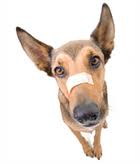Cuts, Wounds, Punctures, Lacerations and Abscesses on Your Pet
 Bite wounds, cuts and other punctures that then become infected are one of the most common problems that we see in veterinary medicine. We treat many everyday and left untreated, could be potentially deadly, especially to cats. Many people do not realize that their pet has an abscess because the swelling is often hidden under the fur, but they bring their pet in because it is lame, not eating, or lethargic. And their most common complaint is that ” it just isn’t acting right.” There are some wounds that are quite obvious because there is blood and goo all over the place.
Bite wounds, cuts and other punctures that then become infected are one of the most common problems that we see in veterinary medicine. We treat many everyday and left untreated, could be potentially deadly, especially to cats. Many people do not realize that their pet has an abscess because the swelling is often hidden under the fur, but they bring their pet in because it is lame, not eating, or lethargic. And their most common complaint is that ” it just isn’t acting right.” There are some wounds that are quite obvious because there is blood and goo all over the place.At the Olsen Veterinary Clinic, this is what to expect if your pet has an infected wound. First and foremost a a good examination. Not only addressing a whole body normal exam, but we pay special attention to fever, enlarged lymph nodes, pupil clarity, foreign bodies left in the wound, presence of maggots, the texture of the wound for hints of fistulations or reactive tissue. We also look for evidence of gangrene and necrosed tissue. We are of course interested in the overall health of the patient. Does it seem healthy or is it debilitated. If the pet is debilitated, further treatment may be also needed in addition to the wound. Based on the examination we will then decide if the wound or abscess is minor and likely to heal with just cleaning and antibiotics or is more serious and be better treated with surgical draining, flushing, debridgement, and repair in addition to antibiotics.
If the wound is minor and unlikely to need surgery, we will probably do the following. Inspect and clean the wound. This will involve clipping the area and removing all the hair so that we can scrub all the crud off. The wound will also be scrubbed with an antiseptic cleaner, most often Nolvasan, a steroid and an antibiotic. Antibiotics will be given and dispensed. They may be oral or injectable. Sometimes cultures and sensitivities may be done, especially if the patient is not responiding well to the treatment prescribed. Pain medications and steroids may be dispensed and given to reduce inflammation and pain making the pet more comfortable at home. Usually we will dispense E-collars or some other devices to prevent licking, chewing and biting at the wound. Recently, we have incorporated the use of therapuetic laser to our regimen. This reduces the pain and inflammation on a cellular level. Always be prepared to return for more aggressive treatment, possible surgery or change in treatment plan if the problem is not improving. No vet likes to hear that someone is bad mouthing a vet because some minor problem didn’t heal on the initial treatment. Of course, 100% of the medical problems don’t resolve with simple, cheap care. Keeping things cheap and simple is appropriate for many common health problems, but when it doesn’t work, you’re supposed to come back.
